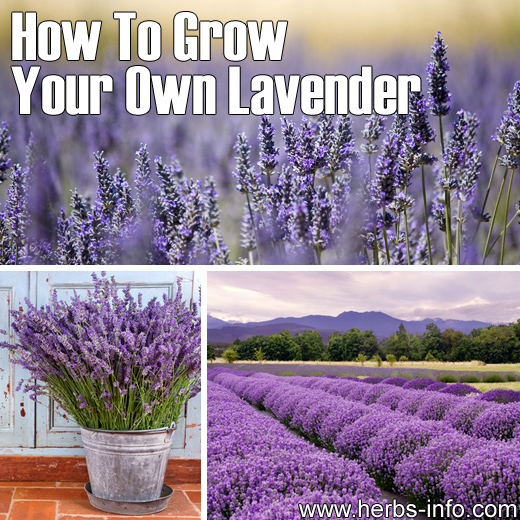 Photos – © visuall2, Anna-Mari West, Carly Hennigan – fotolia.com
Photos – © visuall2, Anna-Mari West, Carly Hennigan – fotolia.com
Lavender is a very popular evergreen herb that is native to the Mediterranean, South-western Europe and neighbouring parts of Africa and Asia. It has been in use for millennia as a perfume, flavouring and medicine. There are many different species, the commonest in cultivation being Lavandula angustifolia or “English Lavender” – there are many cultivars now available so it’s possible to grow plants of various sizes with a wide range of flower shapes and colours. [1]
The scent of lavender is well-known to have a calming effect. Did you know that it will deter deer from your garden and can be used to keep clothes moths out of your wardrobe? Please see our herbal page on the many uses and benefits of lavender for more details: https://herbshealthhappiness.com/lavender/
Growing Lavender: In western climates it is considered a hardy perennial that lives for around 10 years and grows into a small shrub, although it is grown as an annual in hot, dry climates. English lavender grows well in US zones 5-8; in dry soils or in the far south it is recommended that you grow French or Spanish lavender as they can tolerate drought more easily.
First of all it’s important to find the right location and soil type to grow your plants – lavender prefers well-drained, poor or moderately fertile soil, preferably chalky and with a pH of 6.5 to 7.5, so add some gravel and organic matter if your soil is heavy and lime if it is acidic. It needs full sun to grow at its best but too much humidity can still cause disease so give the plants room for the air to circulate freely and plant them on a raised mound in humid areas. [2]
Propagation by cuttings is the most common and reliable method – either from softwood [3] in early summer or hardwood cuttings [4] in late fall. Cuttings will produce true cultivars.
Growing from seed is more difficult as the seeds take several weeks to germinate and can be affected by damping off. If you collect your own seed from cultivars, the new plants will vary from the mother plant. It’s best to sow in the spring and provide a temperature of 70 degrees. Patience is needed as the plants grow slowly! [2]
It is crucial that the ground is kept clear around your plants as they do not compete well with weeds. Regular mulching with compost around (but not touching) the plant stem or frequent weeding will do the trick. Occasional watering is necessary in longer spells of dry weather. [5]
Pruning will extend the life of your plants by keeping them compact. Harvest the leaves and flowers on a dry day in the cool of the morning but be careful not to cut them back to the old wood as it will not regenerate well. [6]
Further Reading:
https://herbshealthhappiness.com/lavender/
https://bonnieplants.com/growing/growing-lavender/
References:
[1] https://en.wikipedia.org/wiki/Lavender
[2] https://mountainvalleygrowers.com/lavendercareandtips.htm
[3] https://rhs.org.uk/Advice/profile?PID=307
[4] https://rhs.org.uk/advice/profile?pid=387
[5] https://pelindabalavender.com/about-lavender/growing-lavender
★ Get My Books - 100% FREE:
😳 Tinnitus And Brain Health?
After 47 years of studies and countless brain scans done on more than 2,400 tinnitus patients, scientists at the MIT Institute found that in a shocking 96% of cases, tinnitus was actually shrinking their brain cells.
As it turns out, tinnitus and brain health are strongly linked.
Even more interesting: The reason why top army officials are not deaf after decades of hearing machine guns, bombs going off and helicopter noises…
Is because they are using something called "the wire method", a simple protocol inspired by a classified surgery on deaf people from the 1950s...
★ How To Get Rid Of Nail Fungus:
★ Does Your Salad Contain This Vegetable?
★ 20 Natural Painkillers In Your Kitchen (Video):
★ Men's Prostate Health:

2. Famous Chef Sheds 60lbs Researching New Paleo Recipes: Get The Cookbook FREE Here
3. #1 muscle that eliminates joint and back pain, anxiety and looking fat
4. 7 odd foods that KILL your abdominal fat (surprising fat-fighters)
5. The TRUTH about bread (Will surprise you!)
6. [PROOF] Reverse Diabetes with a "Pancreas Jumpstart"
7. Here's What Happens When You "Unlock Your Hip Flexors"
8. The #1 WORST food that CAUSES Faster Aging (beware -- Are you eating this?)
The #1 Muscle That Eliminates Joint And Back Pain, Anxiety And Looking Fat
By Mike Westerdal CPT
Can you guess which muscle in your body is the #1 muscle that eliminates joint and back pain, anxiety and looking fat?
This is especially important if you spend a significant amount of time sitting every day (I do, and this really affects me in a big way!)
Working this "hidden survival muscle" that most people are simply not training because no-one ever taught them how will boost your body shape, energy levels, immune system, sexual function, strength and athletic performance when unlocked.
If this "hidden" most powerful primal muscle is healthy, we are healthy.
Is it...
a) Abs
b) Chest
c) Glutes
d) Hip Flexors
Take the quiz above and see if you got the correct answer!
P.S. Make sure you check out this page to get to know the 10 simple moves that will bring vitality back into your life:
If you enjoyed this page:















Thank you.Join to you.